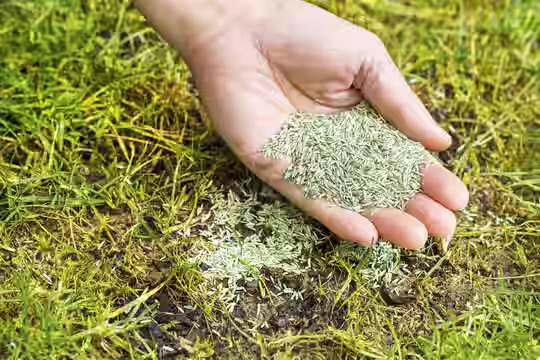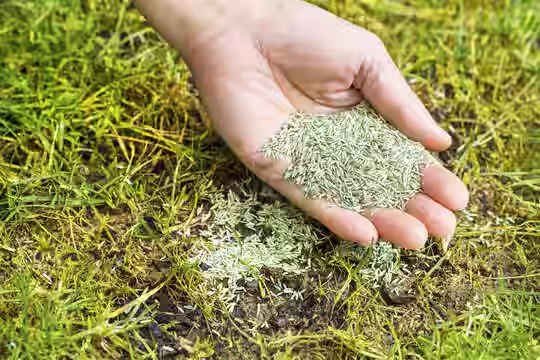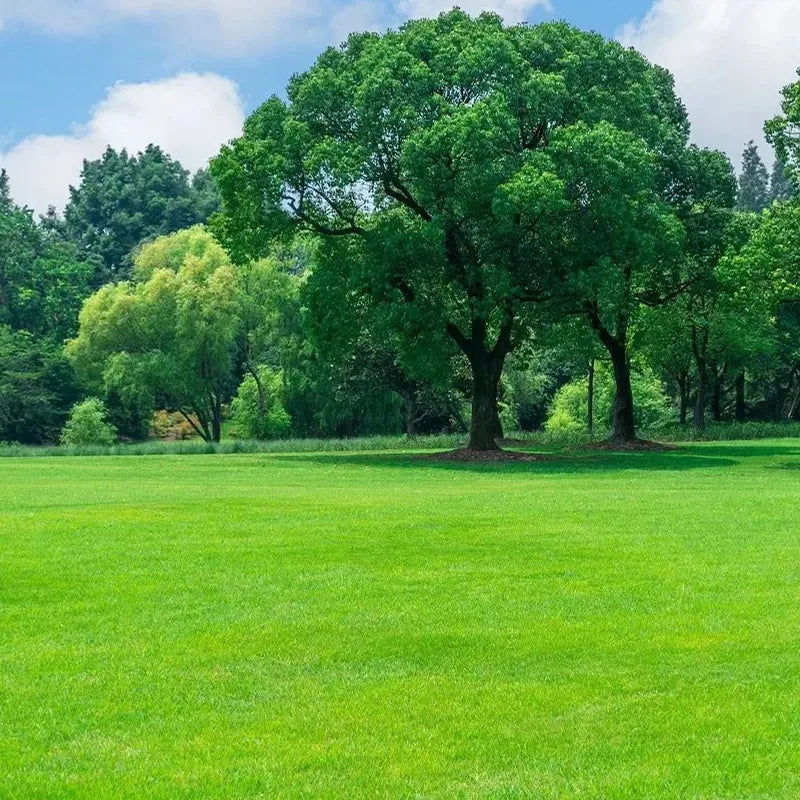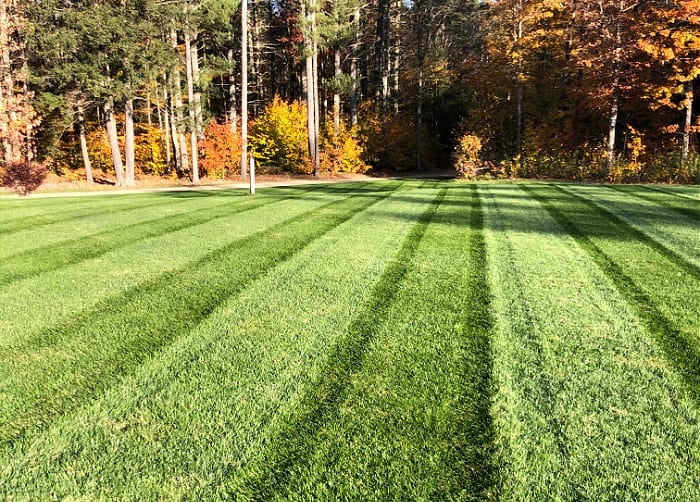A vibrant, healthy lawn is the foundation of a beautiful outdoor space. Whether you’re dealing with bare patches, thinning areas, or simply want a lush, emerald-green carpet of grass, planting grass seed is one of the most effective ways to improve your lawn. But successful seeding isn’t as simple as scattering seed and hoping for the best — it requires the right preparation, technique, and aftercare.
In this comprehensive guide, we’ll take you through the right way to plant grass seed, ensuring you achieve a dense, healthy lawn that enhances your home’s curb appeal and provides a perfect space for outdoor enjoyment.
Why Plant Grass Seed?

Grass naturally thins over time due to factors like:
- Foot traffic
- Drought or harsh weather
- Disease or pest damage
- Nutrient depletion
Planting new grass seed rejuvenates your lawn by:
- Filling in bare spots
- Thickening existing grass
- Introducing newer, disease-resistant varieties
- Improving lawn appearance and resilience
It’s an affordable, effective way to boost the health and beauty of your yard.
When Is the Best Time to Plant Grass Seed?
Timing is everything. The best season to plant grass seed depends on your local climate and grass type:
| Grass Type | Ideal Planting Time |
|---|---|
| Cool-season grasses (fescue, ryegrass, Kentucky bluegrass) | Early fall (September to October) or early spring |
| Warm-season grasses (Bermuda, Zoysia, St. Augustine) | Late spring to early summer |
Why fall is best for cool-season grasses:
- Warm soil accelerates germination.
- Cooler air reduces seedling stress.
- Fewer competing weeds.
For warm-season grasses, late spring ensures soil warmth and longer daylight hours for rapid growth.
What You’ll Need

Before starting, gather these supplies:
- Grass seed suitable for your region
- Lawn mower
- Metal rake or dethatcher
- Lawn aerator (optional but recommended)
- Seed spreader (broadcast or drop)
- Garden hose with sprinkler or spray nozzle
- Starter fertilizer (lawn safe for new seedlings)
- Topsoil or compost (for patch repairs)
Step-by-Step Guide to Planting Grass Seed the Right Way
Step 1: Test and Prepare the Soil
Healthy soil is key to successful seeding.
Start by testing your soil’s pH — grasses typically thrive between 6.0 and 7.5.
If needed:
- Apply lime to raise pH.
- Add sulfur to lower it.
Next:
- Remove rocks, debris, and dead grass.
- Loosen compacted areas with a rake or rototiller.
Optional: Aerating your lawn allows water, nutrients, and seeds to penetrate deeper.
Step 2: Choose the Right Grass Seed
Pick a grass seed that:
- Matches your existing lawn (if overseeding)
- Suits your climate and sun/shade conditions
- Offers disease and drought resistance
Popular seed types:
- Kentucky Bluegrass: Lush, cool-season lawns
- Tall Fescue: Drought-tolerant, tough grass
- Perennial Ryegrass: Quick germination, high traffic
- Bermuda Grass: Warm-season sun-loving lawns
- Zoysia: Heat-tolerant and dense
Step 3: Mow the Existing Lawn (If Applicable)
If overseeding:
- Mow your lawn to 1.5–2 inches high.
- Bag the clippings to expose the soil and prevent shade over the new seeds.
Step 4: Loosen and Prepare the Soil Surface
Use a metal rake to:
- Remove debris
- Loosen the top ¼ inch of soil
- Create furrows or grooves for better seed contact
For bare patches:
Spread a thin layer of compost or quality topsoil before seeding.
Step 5: Apply Starter Fertilizer
A phosphorus-rich starter fertilizer promotes rapid root growth.
Spread evenly across the lawn before seeding, according to package directions.
Avoid “weed and feed” products — they can harm young grass.
Step 6: Spread the Grass Seed
Use a broadcast or drop spreader for consistent coverage:
- Set the spreader to the recommended setting on the seed package.
- Walk in straight, overlapping rows for even distribution.
For small patches:
You can hand-sow seeds, gently scattering over the area.
Step 7: Lightly Rake and Topdress
Rake the surface gently to mix seeds into the soil and improve seed-to-soil contact.
Optional:
- Apply a thin layer (¼ inch) of compost or peat moss over the seeded area to help retain moisture and protect seeds from birds.
Step 8: Water Properly
Watering is crucial:
- Immediately water the area thoroughly after seeding.
- Keep the top 1 inch of soil consistently moist during germination.
- Water lightly 1–2 times daily for the first 2–3 weeks.
Once seedlings are 2–3 inches tall:
Reduce watering to deeper, less frequent sessions.
Post-Planting Care

Mowing
- Wait until new grass reaches 3–4 inches before mowing.
- Use a sharp blade and remove only the top ⅓ of the grass height.
Feeding
- Avoid fertilizing again until 6–8 weeks after seeding.
- Use a balanced, slow-release fertilizer to support ongoing growth.
Avoid Heavy Traffic
Limit foot traffic in newly seeded areas until the grass establishes — about 6–8 weeks.
Common Mistakes to Avoid

| Mistake | Why It’s a Problem | How to Fix |
|---|---|---|
| Seeding without soil prep | Poor germination | Always loosen and clean soil |
| Over-seeding or under-seeding | Crowding or patchy growth | Follow recommended rates |
| Skipping watering | Dry soil halts germination | Keep soil consistently moist |
| Using weed control products | Can kill new seedlings | Wait until grass is well established |
| Mowing too soon or too short | Stresses seedlings, causes thinning | Wait for 3–4 inch growth, cut no more than ⅓ |
How Long Does It Take Grass Seed to Grow?
It depends on the seed variety and conditions:
| Grass Type | Germination Time |
|---|---|
| Ryegrass | 5–10 days |
| Fescue | 7–14 days |
| Kentucky Bluegrass | 14–30 days |
| Bermuda | 10–30 days |
Full establishment takes 6–10 weeks.
Pro Tips for Success

- Use mulch or straw for large bare patches to retain moisture and protect seeds.
- Choose blended grass seed mixes for better disease resistance and versatility.
- Aerating your lawn every 1–2 years enhances growth and prevents compaction.
- Regularly test your soil to maintain ideal pH and nutrient levels.
Final Thoughts
Planting grass seed the right way transforms a tired, patchy yard into a lush, vibrant lawn. With careful soil preparation, thoughtful seed selection, consistent watering, and proper aftercare, you’ll enjoy thick, green grass that adds value and beauty to your home.
Whether you’re overseeding existing grass or planting a new lawn from scratch, this step-by-step guide ensures you do it right — achieving long-lasting, healthy results you’ll be proud of.



